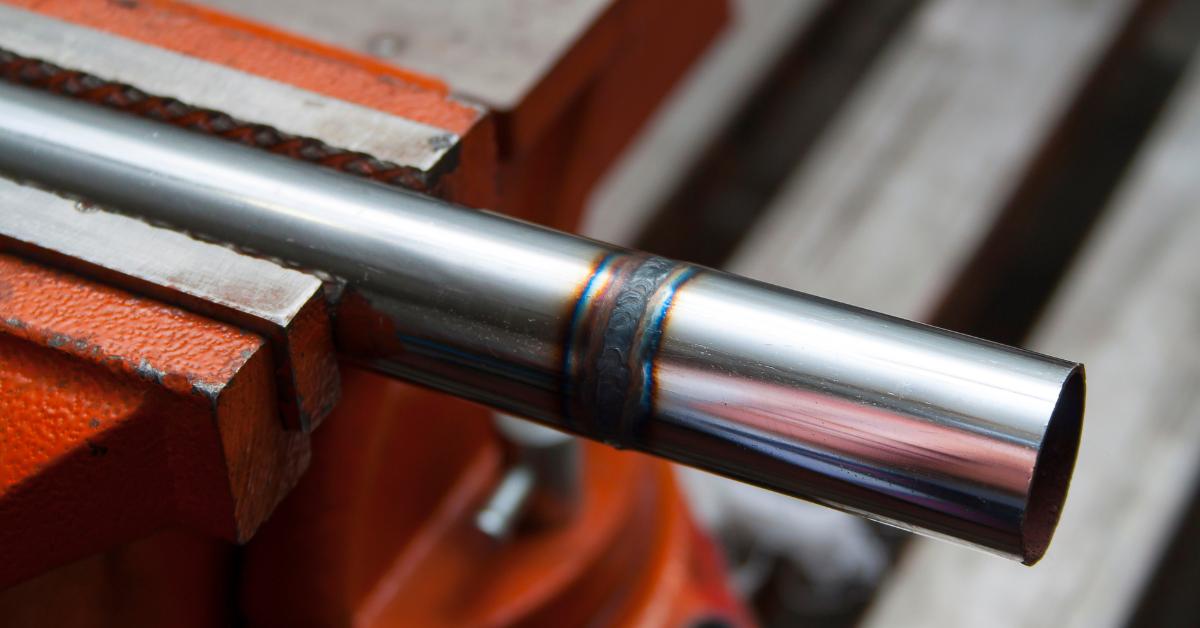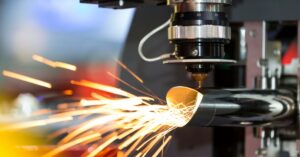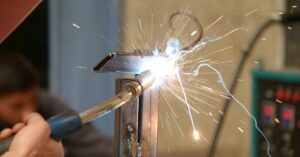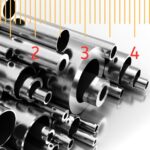There are many different telescopic tube cutting methods and equipment options available ranging from simple hand tools to industrial specialist machinery. Although all cutting methods will result in a cut being made through the tubes, it is really important to choose the most appropriate process for the specified task.
Most telescopic tube working projects will require cuts to be made during fabrication. It is important to understand how the tools work, and how and when to use each method, it will be easier to make the right choice first time – saving time, money, and of course, maintaining workshop safety.
Also Read
Telescopic tubes are a type of metal tube that can be adjusted in both length and diameter. They are are commonly used in many applications, such as furniture, automotive, and aerospace. In order to properly cut these tubes, there are certain safety precautions that must be taken. Let’s discuss the telescopic tube cutting methods in a safe way.
Before beginning the process of cutting telescopic tubes, it is important to note that safety should always be the number one priority. It is essential to wear protective gear, such as safety glasses, face shields, and hearing protection. Additionally, it is important to ensure that the work area is well-lit and free of any combustible materials.
How to cut telescopic tube with a hacksaw
Hacksaws are a hand tool that is a very versatile addition to any workshop. Hacksaws work by simply moving the blade through the metal backwards and forwards in a regular ‘sawing’ action. The C shaped handles are relatively cheap to buy and the wide range of blades available enables a wide range of profile thickness and metal grades to be cut easily.
The handles range from basic varieties that simply, yet securely, hold the hack saw blade in place through to professional varieties that have easy to use features such as; thumb dial tensioners in the handle to provide 150kg or 30,00 psi blade tension, adjustment to accommodate 250mm or 300mm blades, and secondary blade positioning to enable 45° blade angle for flush cutting or 90° for general tubes cutting.
Tips for cutting telescopic tube using a hacksaw.
- Always wear eye protection and gloves when telescopic tube cutting process.
- Select the correct blade for the project being undertaken and ensure it is securely inserted in the frame/ handle with the teeth facing either forwards or backwards depending on preference.
- Check the blade is rigid, correctly aligned, and taut.
- Clamp the workpiece or place it in a vice; if this is not possible as the metal is joined to another object, ensure the piece you are not wishing to remove will remain secure once the other piece has been cut off.
- To begin the cut, make a series of one-way strokes against the direction of the teeth – this will create a narrow incision that the blade can sit in. Once the blade has gained purchase in a millimetre or so of the surface, the full forward and backwards sawing action will soon enable the cut off to be completed.
- Try not to rush; a smooth, steady sawing action will provide the best cut and will reduce the likelihood of the blade overheating and breaking. A little machine oil or cutting fluid placed on the blade will reduce friction.
How to cut telescopic tube with a bandsaw
Bandsaws are a power tool that have a looped metal cutting blade tensioned over 2 pulleys. The top pulley retains and guides the blade, while the lower pulley varies the speed. The blade runs in one direction rather than with the ‘up and down’ movement of a jig saw. Bandsaws are not suitable for cutting very thin sheet telescopic tube; a rule of thumb suggests the tubes to be cut should be thicker than the depth of 3 bandsaw blade teeth. Cutting tubes with bandsaw is unpopular telescopic tube cutting methods.
Blades are available in different widths suited for different cutting requirements; thicker blades work well for thicker metal stock and straight cuts, whereas a thinner blade is better suited to cutting curves. Blades with a higher tpi provide a smoother cut edge whereas blades with a lower tpi make light work of cutting through thicker telescopic tube.
Bandsaws are available as cordless units, bench top models, and as freestanding floor models. As with most power tools, the range of extra features increases from standard settings on smaller DIY models to a fully comprehensive range of additional features available on the more professional models, extra features may include mitre cutting settings, more variable speed settings, and hydraulic descent in addition to standard manual descent. Bandsaw speed settings are measured in either metres per minute (mpm) or the more standard revolutions per minute (rpm).
Tips for cutting telescopic tube with a bandsaw.
- Ensure correct PPE including eye and ear protection is worn.
- Mark or score the cut line if necessary.
- Ensure that the blade is suitable for cutting tubes and that it is correctly fitted and tensioned.
- Make sure all blade guards are in the correct position and free from defect.
- Adjust all settings for the type of cut being performed; such as speed and mitre angle for example.
- Connect the power and make sure all cables are out of the way of the blade, then start the machine.
- When using a bandsaw set in the vertical position, cutting is achieved by resting the telescopic tube on the plate and pushing it towards the blade while maintaining pressure. The blade can pass completely through the workpiece or the workpiece can be simply withdrawn, rotated and pushed towards the blade again to make additional cuts.
- If cutting an intricate design, it is advisable to make a series of relief cuts to reduce any binding on the blade.
- When cutting curves, it is best to start at the shallowest angle of the curve and work towards the steepest angle to reduce the risk of the blade veering off from the cut line. If both ends of the curve are shallow, make a cut from each end until they meet at the middle.
- For cuts using the hydraulic arm capabilities of some bandsaw models, place the metal on the support table and ensure it is firmly held against the rear guard, lower the arm to move the blade downwards through the workpiece.
- For cuts using a cordless bandsaw; ensure the workpiece is secure, line up the blade to the intended cut line and lower the blade into the metal. Once the cut has been made, stop the blade and withdraw.
- If the blade begins to stick or bind, stop the blade and apply some wax stick directly to the teeth of the blade.
How to cut telescopic tube with a mitre saw, cut off saw, or chop saw
Chop saws and cut off saws make a straight cut across the profile at 90° while mitre saws cut across profiles at an angle, however, the directions for using all these machines are the same. Mitre saws, cut off saws, and chop saws have a ‘cutting plinth’ integrated into the design to provide a static cutting area.
Although mitre saws were traditionally used for cutting wood, with the correct blade they can make light work of cutting through steel and aluminium profiles at an angle. This is my favourite of telescopic tube cutting methods. Accessories such as these mitre saw blades provide easy cutting through aluminium and non-ferrous metals, or these high performance discs give good results for cutting through steel and stainless steel telescopic tube with precise, clean cuts.
Tips for cutting telescopic tube using a chop saw, cut off saw, or mitre saw.
- As with all metal cutting operations, ensure that eye protection, gloves and ear defenders are worn to protect against injury from flying shards and chips of metal.
- If using a mitre saw that has open motor housing, simply tape some thin cloth over the openings and vents to protect the motor from tubes chips.
- If sawing through a profile that is hollow or that has a thin wall, such as aluminium angle, it can be advantageous to back the metal with a piece of wood to add support, therefore, minimising the risk of the blade catching on the metal which may cause a deformation in the metal being cut.
- Before switching on the power to the saw, check that the guard is in good condition and set at the correct position, and that all cables are clear from the cutting area.
- Place the workpiece on the table and secure the workpiece using any vice adjusters or mitre locks and ensure it is held tight against the fence to ensure accuracy of the cut.
- One you are satisfied with your machine set up, maintain pressure on the workpiece against the fence then depress the power switch on the saw and listen for the blade to reach full speed before lowering the blade slowly and consistently through the metal. When the cut is complete, hold the saw in the down position and release the power button- keep a secure hold on the workpiece until the blade has come to a complete stop. One the blade is stationary, return the blade carriage to the upright position.
A Note on Safety
When performing any task involving tubes, safety should be a priority. Always follow the safety procedures laid down by workplace protocols and any training courses attended in any telescopic tube cutting methods. Personal Protective Equipment (PPE) should never be overlooked, even if you think the task will be quicker to complete than hunting down your safety equipment, it is never worth the risk. PPE can help protect from burns, cuts, and metal chips becoming embedded in skin and eyes during the cutting process.
PPE should include:
- A full-face welding mask for plasma cutting and protective eyewear as a minimum for all other cutting methods.
- Ear defenders as the noise from machinery can permanently damage hearing and has been linked to the onset of tinnitus.
- Sturdy foot protection, no-one really wants hot sparks flying in their shoes- reinforced toe boots make sense when cutting metal in case the offcut falls.
- Long sleeved tops and full-length trousers to protect skin from hot sparks and metal chips travelling at high speed.
- Protective gloves- make sure these are fit for purpose; holes and splits will offer no protection and if they don’t fit properly, they will restrict your movement.
Tool Safety
- Always ensure tools are well maintained; check switches, cables, and consumables for signs of damage or wear and ensure blades are sharp- a dull blade is more likely to slip and jump on the metal surface which can damage the metal and lead to injury.
- Replace consumables, such as blades and cutting discs, once signs of heavy use appear.
- Always ensure you disconnect tools from the power supply before replacing the blades or performing any adjustments to the settings.
Workshop Safety
- Keep the floor and surfaces free from clutter, trailing flexes, and debris.
- Take your time- Rushing about in a workshop environment can increase the risk of trips, slips and injury.
- Wipe up spills immediately to reduce the risk of liquids coming into contact with electrical items.
- Take extra care when handling flammable substances.
- Do not let children into the workshop unsupervised, if they are watching an adult work, they should also be provided with suitable PPE.
When the cut is complete, it is important to inspect the cut edge to make sure that it is smooth and free of any burrs or sharp edges. If any burrs or sharp edges are present, they should be filed down or sanded smooth. Additionally, it is important to make sure that the cut edge is properly sealed in order to prevent corrosion.
Telescopic tube cutting can be a dangerous process. However, with the proper safety precautions and the use of the right tools, it can be done safely and effectively. Following the above telescopic tube cutting methods and suggestions should help keep you safe while cutting the tubes in the workplace or home workshop.












